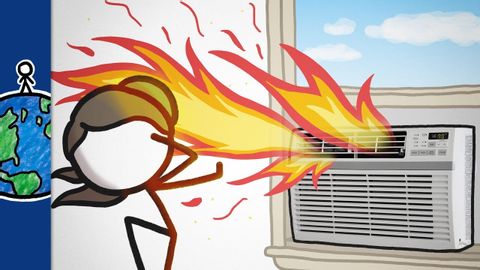冷氣吹得越兇,地球只會越來越熱! (The Cruel Irony Of Air Conditioning)
April Lu 發佈於 2019 年 08 月 29 日  沒有此條件下的單字
沒有此條件下的單字US /ɛnˈtaɪr/
・
UK /ɪn'taɪə(r)/
- adj.全體的 ; 完全的;未分割的;全緣的 (植物學)
US /ɪˈsenʃəli/
・
UK /ɪˈsenʃəli/
- adv.本質上 ; 本來 ; 實質上;本質上;實際上
US /ˈɪmˌpækt/
・
UK /'ɪmpækt/
- n.衝擊;碰撞
- v.t./i.撞擊(某人或物);影響;阻生

